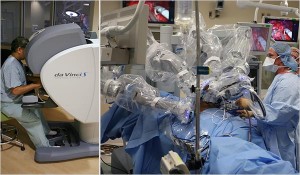 The mantra of “early detection” took another hit yesterday when the NEJM reported that patients who had radical surgery on their prostate did minimally better than patients who simply observed their prostate cancer.
The mantra of “early detection” took another hit yesterday when the NEJM reported that patients who had radical surgery on their prostate did minimally better than patients who simply observed their prostate cancer.
The study involved 731 men with localized prostate cancer (cancer that was localized to their prostate, and small) to where half of those patients were given surgery, a radical prostatectomy, and the others were simply observed. At ten years out 47% of the men who had the radical surgery died, 6% from prostate cancer or treatment, compared to 8.4% of the men who were observed. Bottom line: with 12 years of follow up the absolute differences in death between the two groups was less than 3 percent.
Prostate cancer surgery is not benign. Sexual dysfunction, urinary incontinence being the most common long-term problems. While the latest for surgical innocation is using robotic surgery, and laparoscopic surgery to remove the cancers with decreased morbidity – it is probably this article, that the robot may not be needed at all, and simply watching the cancer is a better route. Robotic surgery still comes with a high incidence of sexual dysfunction and incontinence.
Last year 75,000 men had robotic cancer radical prostate cancer surgery. While the study showing that patients who have robotic surgery had a shorter hospital stay and fewer wound infections, they had more sexual dysfunction and impotence as well as more urinary incontinence. But the market has driven more men to seek robotic radical prostate surgery, but perhaps the least invasive treatment – the use of periodic examinations, may be the best treatment of all.
Just because it’s new, does not mean it’s better.

